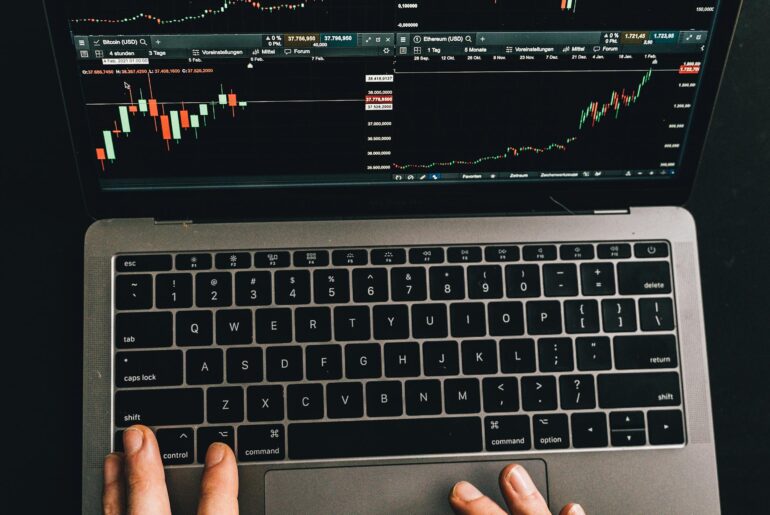This article may contain references to products or services from one or more of our advertisers or partners. We may receive compensation when you click on links to those products or services. Nonetheless, our opinions are our own.
- Understanding Spreads in Investing: A Comprehensive Guide
- What is a Spread, and Why Does It Matter?
- Types of Spreads Investors Should Know
- How to Calculate Spread and Its Effect on Trading
- Misconceptions About Spreads That Could Mislead Investors
- Reducing Spread Costs and Enhancing Profitability
- When Do Spreads Play a Major Role in Investing?
- Conclusion
- Recommended Reads
Understanding Spreads in Investing: A Comprehensive Guide
Navigating financial markets can be challenging, especially when faced with industry-specific terminology. One significant concept in trading and investment decisions is the spread—the difference between the price buyers are willing to pay for an asset (bid price) and the price sellers are asking (ask price).
While spreads may seem minor, they directly affect transaction costs, market liquidity, and overall investment strategies. Whether trading stocks, bonds, or foreign currencies, understanding how spreads work can help investors make informed decisions and optimize their returns.
What is a Spread, and Why Does It Matter?
A spread is a fundamental component of financial markets, influencing both short-term trading activities and long-term investment outcomes. It serves as an indicator of market efficiency, liquidity, and transaction costs.
Key Reasons Spreads Matter
- Impact on Trading Costs: A smaller spread means lower costs, while a wider spread increases the expense of buying and selling assets.
- Liquidity Indicator: Markets with high liquidity tend to have tighter spreads, allowing for smoother transactions.
- Market Sentiment Reflection: Sudden spread changes may indicate investor confidence shifts or economic uncertainty.
Spreads vary depending on the asset class and market conditions. Generally, assets with high trading volume—such as blue-chip stocks and major currency pairs—tend to have lower spreads. Meanwhile, less frequently traded assets, such as corporate bonds or real estate investment trusts (REITs), often have wider spreads.
Types of Spreads Investors Should Know
Spreads vary across financial markets, and each type serves a distinct purpose. Recognizing these differences is essential for making informed trading and investment decisions.
Common Types of Spreads
- Bid-Ask Spread: The most widely recognized spread, measuring the difference between the highest price buyers will pay and the lowest price sellers will accept.
- Yield Spread: The difference in yields between two debt instruments, such as government and corporate bonds, is often used to assess risk levels.
- Credit Spread: Represents the additional yield investors demand for taking on the risk of lower-rated bonds compared to risk-free securities.
- Options Spreads: Includes strategies such as vertical spreads, calendar spreads, and straddle spreads, which allow traders to manage risk and speculate on price movements.
Each type provides valuable insights into market conditions, helping investors tailor their approach based on their financial goals and risk tolerance.
How to Calculate Spread and Its Effect on Trading
Understanding how to calculate spreads is essential for analyzing market conditions and estimating trading costs.
Formula for Bid-Ask Spread:
Spread = Ask Price – Bid Price
For example, if a stock has a bid price of $50 and an ask price of $52, the spread is $2.
Factors That Influence Spread Size
- Market Liquidity: Highly liquid markets tend to have tighter spreads.
- Trading Volume: Securities with high trading activity generally experience smaller spreads.
- Economic Events: Interest rate changes and geopolitical developments can widen spreads.
- Volatility: Sharp price fluctuations can lead to unpredictable spread changes.
Awareness of these factors helps investors determine the best times to enter and exit positions while minimizing unnecessary costs.
Misconceptions About Spreads That Could Mislead Investors
Spreads are often misunderstood, leading to costly mistakes. Some common misconceptions include:
- “Spreads only affect trading costs.” While spreads impact expenses, they signal market liquidity and overall economic conditions.
- “A narrow spread always means a better deal.” A smaller spread does not always guarantee profitability; factors such as order execution and price stability also play a role.
- “Spreads remain constant.” Market conditions change rapidly, and spreads fluctuate due to liquidity, volatility, and news events.
Investors who recognize these nuances can make more informed decisions and avoid overestimating the significance of minor price differences.
Reducing Spread Costs and Enhancing Profitability
Minimizing the impact of spreads can improve overall returns, especially for active traders who execute frequent transactions.
Ways to Reduce Spread Costs
- Trade During Peak Market Hours: Higher trading volume leads to tighter spreads and better pricing.
- Use Limit Orders Instead of Market Orders: Setting a predefined price prevents unnecessary exposure to wide spreads.
- Choose a Broker with Competitive Spreads: Brokers differ in pricing structures, and selecting one with lower spreads can reduce costs over time.
- Monitor Economic Events: Trading around major announcements can expose investors to wider spreads, so timing is essential.
| Trade Example | Spread Cost | Break-Even Gain Needed |
|---|---|---|
| Buy at $50, Sell at $52 | $2 | $2 |
| Buy at $100, Sell at $105 | $5 | $5 |
By applying these strategies, investors can enhance their profitability while avoiding unnecessary trading expenses.
When Do Spreads Play a Major Role in Investing?
Spreads should be carefully considered when making investment decisions, particularly in the following scenarios:
- Comparing Different Asset Classes: Evaluating spreads helps assess risk and return potential across stocks, bonds, and commodities.
- During Periods of Market Uncertainty: Widening spreads can indicate increased volatility, guiding investors to adjust their portfolios.
- Assessing the Costs of Investment Vehicles: Mutual funds and exchange-traded funds (ETFs) have associated spreads that can impact long-term returns.
| Market Condition | Spread Size | Investment Impact |
|---|---|---|
| High Liquidity | Narrow | Efficient execution |
| Low Liquidity | Wider | Increased costs |
| High Volatility | Wider | Higher risk exposure |
Understanding the role of spreads in various market conditions helps investors make more informed and strategic decisions.
Conclusion
Spreads are pivotal in financial markets, influencing everything from transaction costs to investment strategies. Investors can improve their decision-making and overall economic outcomes by recognizing different types of spreads, understanding how they are calculated, and implementing strategies to reduce their impact.
Staying informed about spreads ensures a more strategic approach to trading and investing, ultimately leading to more efficient and cost-effective portfolio management.

Reviewed and edited by Albert Fang.
See a typo or want to suggest an edit/revision to the content? Use the comment form below for feedback.
At FangWallet, we value editorial integrity and open collaboration in curating quality content for readers to enjoy. Much appreciated for the assist.
Did you like our article and find it insightful? We encourage sharing the article link with family and friends to benefit as well - better yet, sharing on social media. Thank you for the support! 🍉
Article Title: What Investors Should Know About Spread
https://fangwallet.com/2025/03/31/bid-ask-spread/The FangWallet Promise
FangWallet is an editorially independent resource - founded on breaking down challenging financial concepts for anyone to understand since 2014. While we adhere to editorial integrity, note that this post may contain references to products from our partners.
The FangWallet promise is always to have your best interest in mind and be transparent and honest about the financial picture.
Become an Insider
Editorial Disclaimer: The editorial content on this page is not provided by any of the companies mentioned. The opinions expressed here are the author's alone.
The content of this website is for informational purposes only and does not represent investment advice, or an offer or solicitation to buy or sell any security, investment, or product. Investors are encouraged to do their own due diligence, and, if necessary, consult professional advising before making any investment decisions. Investing involves a high degree of risk, and financial losses may occur including the potential loss of principal.
Source Citation References:
+ Inspo
There are no additional citations or references to note for this article at this time.












































